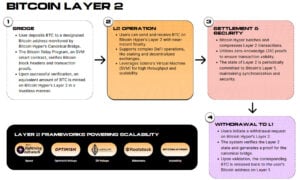During the U.S. federal government shutdown that began on October 1, 2025, the Securities and Exchange Commission (SEC) went into contingency staffing mode. Almost a hundred crypto ETF decisions got stuck in approval limbo as a result, and key economic-data releases from agencies such as the Bureau of Labor Statistics and the U.S. Census Bureau were paused.
For crypto, that blackout became an unscripted stress test, as the industry suddenly lost its usual regulatory support elements. And given that the crypto market often prides itself on being decentralized and self-sufficient, this is a moment of truth where it can prove that claim.
How do crypto traders, exchanges, and issuers perform when oversight suddenly vanishes? Let’s take a look.
What Actually Pauses in a U.S. Shutdown:
- ETF and token-filing reviews: Routine processing of ETF and token registration documents is largely suspended, as reflected by the SEC announcement.
- Issuer communications: Many correspondence channels between the SEC and registrants are inactive during the shutdown.
- Federal data releases: Reports such as jobs, inflation, and trade data are delayed, per Census Bureau and Bureau of Labor Statistics notices prior to the shutdown.
A Pause in Oversight, Not in Action
The shutdown didn’t just stop new rules; it halted everything that gives the market structure and visibility. And with enforcement activity slowing to a crawl, that leaves crypto issuers, exchanges, and traders navigating the silence on their own terms.
For issuers, it’s an exercise in patience. There’s nothing to do but wait. Projects with pending ETF or token applications simply can’t move forward, no matter how ready they may be. Bureaucratic timeouts don’t discriminate — they hit all momentum equally.
Exchanges, meanwhile, are keeping steady. The more experienced ones understand that running smoothly during a regulatory blackout is the best insurance policy. If anything goes wrong now, it will all too likely be audited later. So the smart players are making an effort to stay compliant and avoid anything that might look questionable when the lights come back on.
Traders, though, seem to be leaning into the chaos, treating the shutdown as an opportunity rather than a reason to slow down. Take Bitcoin as an example: during the initial two weeks since the shutdown began (October 1–14), BTC briefly traded above the $120,000 mark, with $60–70 billion in 24-hour volume, as reported by CoinMarketCap.
With no new macro data or regulatory headlines to anchor expectations, market participants are relying on the only signal left: price action. In normal times, traders ask “why” something moves. In a vacuum, they just react to “what.” It becomes a feedback loop: price drives sentiment, sentiment drives price. The result is a market that feels alive and unpredictable, but also detached from fundamentals. Whatever the market does becomes the message.
A Sign of Strength? Or Immaturity?
That’s fascinating to look at, but also very risky. On the surface, the market looks mature. Prices are up, liquidity is high, and exchanges aren’t showing signs of stress. Considering the absence of active supervision, it suggests that crypto infrastructure has grown more resilient than it used to be.
But if we look under the surface, we can see that the shutdown is also exposing weak spots. Some traders behave as if the absence of oversight means freedom to take bigger risks. It’s the financial equivalent of kids testing boundaries while the parents are out. But make no mistake: when regulators return, they will be checking every corner.
Periods of regulatory absence tend to invite leverage creep and lax disclosure discipline. In credit markets, analysts have observed that when firms operate outside the full view of regulators and public disclosure, they behave with unprecedented discretion, shielded from the discipline and scrutiny usually imposed by the watchdogs.
And from what we’ve observed so far, the same implications hold true for the crypto market: when oversight is minimal, boundary-testing accelerates. But when the SEC’s full staffing returns, those actions won’t just vanish — they will simply become visible for retrospective review.
So yes, the market is holding up, but it’s being tested. True maturity isn’t about how you act when someone’s watching — it’s about what you do when no one is.
When the Data Stops Flowing
For all its independence, the crypto market doesn’t operate in a vacuum. As more traditional players enter the space, digital assets increasingly move in sync with macro signals — interest rates, inflation reports, and regulatory updates. These signals shape sentiment, liquidity, and strategy. When they suddenly disappear, the entire decision-making framework shifts.
In their absence, other signals are now rising in importance. Traders are paying more attention to on-chain metrics like wallet flows or gas fees. Social sentiment and news chatter become substitutes for economic data. Now that traditional data streams have gone dark, the background “noise” has taken center stage and become the new compass.
But this substitution has limits. While on-chain data can reveal activity, it doesn’t always capture intent. And so, it doesn’t always capture risk either. Without reliable macro context, even experienced traders can misread the market’s tone.
ETF Delays: The Silent Momentum Killer
Perhaps the most visible casualty of the shutdown is the pipeline of spot and futures ETFs whose reviews had been halted by the SEC.
These aren’t just financial products — they represent institutional validation and investor confidence. When approvals freeze, builders lose momentum and investors lose patience. People don’t care why the approvals are missing, only that they are. And the whole sector starts to feel like it’s waiting for permission again.
It’s important to remember that the delay doesn’t mean a “no” — it’s a “not yet.” A simple bureaucratic freeze instead of the regulator passing down negative judgment. But perception matters, and in a fast-moving market like crypto, even silence can feel like rejection.
Shutdowns are rarely good for anyone but can be especially devastating to sectors where timing, trust, and momentum are everything.
Quick Takeaways:
- Bitcoin’s surge during the shutdown signals confidence, but also speculative reflex when oversight is gone.
- Delays in ETF reviews reflect bureaucracy and staffing issues, not the SEC’s official stance. It’s important not to let this sway the general market sentiment.
- With macro data on hold, on-chain and sentiment signals gain influence, but they can be misleading. These tools reflect activity, but not always intent.
The Bigger Picture
So, ultimately, what does this stress test tell us? First, that the days when regulatory uncertainty froze all activity are largely behind us — the crypto infrastructure is stronger now, more resilient.
But it also shows that absence of oversight doesn’t mean absence of risk. The market might be stable now, but when normal regulatory operations resume, it remains to be seen who overextended themselves in the quiet.
The current shutdown may be temporary, but the lessons it reveals about the discipline and maturity of this market will have far-reaching consequences.
Source: https://cryptoslate.com/crypto-under-pressure-what-the-u-s-shutdown-tells-us-about-market-resilience/


